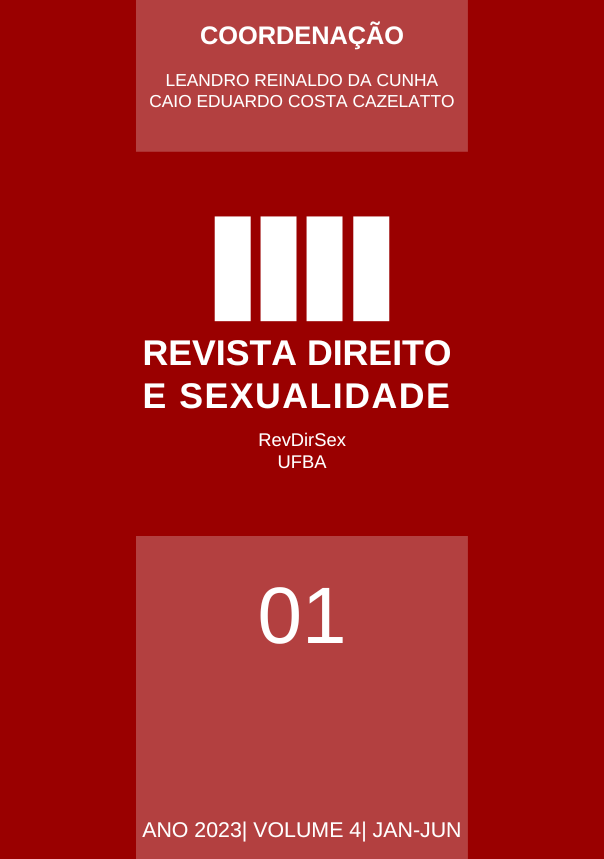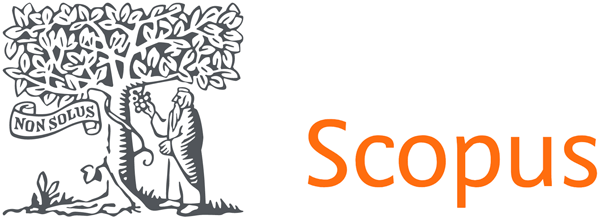TIPOLOGÍA CRIMINAL DE LAS AGRESIONES SEXUALES MÚLTIPLES EN ESPAÑA
UN ESTUDIO A PARTIR DEL CRIME SCRIPTING
DOI:
https://doi.org/10.9771/rds.v4i1.53881Palavras-chave:
Agresiones sexuales múltiples, Crime scripting, situacional y victimalResumo
Mediante este estudio, de naturaleza exploratoria, se proporciona un análisis teórico del proceso de comisión del crimen en los supuestos de agresiones sexuales múltiples utilizando la metodología del Crime Script a partir de los datos obtenidos en una muestra de sentencias condenatorias. Los resultados permiten una mejor comprensión del proceso de comisión del delito de agresión sexual múltiple a mujeres en los casos resueltos y condenados, de modo que pueda servir de base para el establecimiento de estrategias policiales y de prevención situacional del delito que puedan disuadir este tipo de crímenes sexuales ya en las primeras etapas del proceso.
Downloads
Referências
ALMOND, Louise; SAINSBURY, Martha; MCMANUS, Michelle. Sex Offenses Perpetrated Against Older Adults: A Multivariate Analysis of Crime Scene Behaviors. Journal of Interpersonal Violence, v. 37, n. 7-8, p. 1–25, 2020. Disponível em: https://doi.org/10.1177/0886260520928639. Acesso em: 22 feb. 2023.
BEAUREGARD, Erik; ROSSMO, Kim; PROULX, Jean. A descriptive model of the hunting process of serial sex offenders: A rational choice approach. Journal of Family Violence, v. 22, p. 449-463, 2007. Disponível em: https://doi.org/10.1007/s10896-007-9101-3. Acesso em: 19 feb. 2023.
BORRION, Hervé. Quality assurance in crime scripting. Crime Science, v. 2(1), n. 6, 2013. Disponível em: https://doi.org/10.1186/2193-7680-2-6. Acesso em: 3 mar. 2023.
BRAYLEY, Helen; COCKBAIN, Eleanor; LAYCOCK, Gloria. The Value of Crime Scripting: Deconstructing Internal Child Sex Trafficking. Policing: A Journal of Policy and Practice, v. 5, n. 2, p. 132–143, jun. 2011. Disponível em: https://doi.org/10.1093/police/par024. Acesso em: 14 feb. 2023.
CARVALHO, Joana; NOBRE, Pedro J. Five-Factor Model of Personality and Sexual Aggression. International Journal of Offender Therapy and Comparative Criminology, v. 63, n. 5, p. 797-814, 2013. Disponível em: DOI: 10.1177/0306624X13481941. Acesso em: 8 feb. 2023.
CHAMBERS, Jemma C.; Horvath, Miranda A.H.; KELLY, Liz. A typology of multiple-perpetrator rape. Criminal Justice and Behavior, v. 37, n.10, p. 1114-1139, 2010. Disponível em: https://doi.org/10.1177/0093854810377971. Acesso em: 21 feb. 2023.
CLARKE, Ronald V.; CORNISH, Derek B. Rational choice and Routine Activities. In PATERNOSTER, Raymond; BACHMAN, Ronet (Eds.), Explaining criminals and crime. Essays in contemporary criminological theory. Los Ángeles, CA: Roxbury Publishing Company, 2001, p. 23-42.
CLARKE, Ronald V.; NEWMAN, Graeme. R. Outsmarting the Terrorist. Westport, CT: Praeger Security International, 2006.
CLARKE, Ronald V.; CORNISH, Derek B. Modeling offenders’ decisions: A framework for research and policy. Crime and Justice: An Annual Review of Research, v.6, p. 147-185, 1985.
COHEN, Lawrence E.; FELSON, Marcus. Social change and crime rate trends: A routine activity approach. American Sociological Review, v.44, n. 4, p. 588–608, 1979. Disponível em: https://doi.org/10.2307/2094589. Acesso em: 20 feb. 2023.
COOK, Alana; REYNALD, Danielle M.; LECLERC, Benoit; WORTLEY, Richard. Learning about situational crime prevention from ofenders: Using a script framework to compare the commission of completed and disrupted sexual offenses. Criminal Justice Review, v. 44, n.4, p. 431–451, 2019. Disponível em: https://doi.org/10.1177/07340168188121. Acesso em: 12 feb. 2023.
CORNISH, Derek. Crimes as scripts. In: ZAHM, Diane; CROMWELL, Paul (Eds.). Proceedings of the International Seminar on Environmental Criminology and Crime Analysis. Tallahassee, FL: Coral Gables, FL. University of Miami, Florida Criminal Justice Executive Institute Crime as scripts, 1994, p. 30-45. Disponível em: https://bjs.ojp.gov/content/pub/pdf/pisecca.pdf. Acesso em: 12 feb. 2023.
CORNISH, Derek. B. In: M. Martin (Ed.), Environmental criminology and
Crime analysis: Papers of the Seventh International Seminar, Barcelona, 1998, Regulating lifestyles: A rational choice perspective. Barcelona: University of Barcelona, p. 165-176.
DA SILVA, Teresa; WOODHAMS, Jessica. Introduction to the special issue on multiple perpetrator sexual offending. Journal of Sexual Aggression, London, v. 25, n. 3, p. 223-225, 2019. Disponível em: https://doi.org/10.1080/13552600.2019.1681679. Acesso em: 7 mar. 2023.
DA SILVA, Teresa; WOODHAMS, Jessica; HARKINS, Leigh. Multiple perpetrator rape: A critical review of existing explanatory theories. Aggression and Violent Behavior, v. 25, part. A, Nov-Dec 2015, p. 150–158. Disponível em: https://doi.org/10.1016/j.avb.2015.07.017. Acesso em: 7 mar. 2023.
DE LA TORRE-LASO, Jesús. ¿Por qué se Cometen Agresiones Sexuales en Grupo? Una Revisión de las Investigaciones y Propuestas Teóricas. Anuario de Psicología Jurídica, v. 30, p. 73-81, 2020. Disponível em: https://doi.org/10.5093/apj2019a18. Acesso em: 22 feb. 2023.
DEL REAL CASTRILLO, Cristina. Infractores, víctimas y características del abuso sexual de menores en España. In RODRÍGUEZ MESA, María J. (Dir.). Pederastia. Análisis jurídico-penal, social y criminológico, Barcelona: Aranzadi, 2019, p. 165-206.
DESLAURIERS-VARIN, Nadine; BEAUREGARD, Eric. Victims’ Routine Activities and Sex Offenders’ Target Selection Scripts: A Latent Class Analysis. Sexual Abuse: A Journal of Research and Treatment, v. 22, n. 3, p. 315–342, 2010. Disponível em: https://doi.org/10.1177/1079063210375975. Acesso em: 10 mar. 2023.
DÍAZ FERNÁNDEZ, Antonio M. La investigación de temas sensibles en Criminología y seguridad. Madrid: Tecnos, 2019.
EINSTADTER, Werner. J.; HENRY, Stuart. Criminological theory: An analysis of its underlying assumptions. 2ª ed. Lanham, Maryland: Rowman & Littlefield Publishing Group, Inc., 2006.
EKBLOM, Paul. Talking to Offenders: Practical Lessons from Local Crime Prevention. In: Urban Crime: Statistical Approaches and Analyses. International seminar held under the auspices of Ajuntament de Barcelona Forum des Collectives Territoriales Europeenes pour la Securit Urbaine, 1991, Barcelona. In NEL-LO, Daniel: Talking to Offenders: Practical Lessons for Local Crime Prevention (From Urban Crime: Statistical Approaches and Analyses, Papers and Conclusions). Barcelona: Institut d'Estudis Metropolitans de Barcelona, 1991, p. 23-49.
FELSON, Marcus; CLARKE, Ronald V. Cuestiones éticas en torno a la prevención situacional del delito. In Agustina José R (Dir.). Tendencias en prevención del delito y sus límites: privacidad y dignidad humana frente al uso de las nuevas tecnologías. Madrid: EDISOFER, S.L., 2010, p. 173-206.
FINKELHOR, David; WILLIAMS, Linda; BURNS, Nancy; KALINOWSKI, Michael. Nursery crimes: Sexual abuse in day care. Thousand Oaks, CA: Sage Publications, Inc., 1988.
HARKINS, Leigh; DIXON, Lousie. Sexual offending in groups: An evaluation. Aggression and Violent Behavior, v. 15, n. 2, p. 87-99, mar/abr 2010. Disponível em: https://doi.org/10.1016/j.avb.2009.08.006. Acesso em: 5 mar. 2023.
HARKINS, Leigh; DIXON, Lousie. A multi-factorial approach to understanding multiple perpetrator sexual offending. In WOOD, Jane; GANNON, Theresa (Eds.). Crime and crime reduction: The importance of group processes. East Soussex: Routledge/Taylor & Francis Group, 2013, p. 75-95.
HAUFFE, Sarah; PORTER, Louise. An interpersonal comparison of lone and group rape offences. Psychology, Crime and Law, v. 15, n. 5, p. 469-491, 2009. Disponível em: https://doi.org/10.1080/10683160802409339. Acesso em: 26 feb. 2023.
HORVATH, Miranda; KELLY, Liz. Multiple perpetrator rape: Naming an offence and initial research findings. Journal of Sexual Aggression, v. 15, n. 1, p. 83-96, feb. 2009. Disponível em: https://doi.org/10.1080/13552600802653818. Acesso em: 3 mar. 2023.
JOHNSON, Bruce D.; NATARAJAN, Mangai; SANABRIA, Harry. Successful Criminal Careers: Toward an Ethnography Within the Rational Choice Perspective. In: R.V. Clarke and M. Felson (Eds.). Routine Activity and Rational Choice: Advances in Criminological Theory, v. 5. New Brunswick, NJ: Transaction Press, 1993, p. 201-221.
KNIGHT, Raymond A.; PRENTKY, Robert A. The developmental antecedents and adult adaptations of rapist subtypes. Criminal Justice and Behavior, v. 14, n. 4, p. 403-426, dec. 1987. Disponível em: https://doi.org/10.1177/0093854887014004001. Acesso em: 27 feb. 2023.
LECLERC, Benoit; WORTLEY, Richard (Eds.). Cognition and crime. Offender decision making and script analyses. New York: Routledge, 2015.
LECLERC, Benoit; WORTLEY, Richard; SMALLBONE, Stephen. Getting into the script of adult child sex offenders and mapping out situational prevention measures. Journal of Research in Crime and Delinquency, v. 48, n. 2, p. 209–237, may. 2011. Disponível em: https://doi.org/10.1177/0022427810391540. Acesso em: 16 feb. 2023.
MARSHALL, William L; BARBAREE, Howard E. An integrated theory of the etiology of sexual offending. In (Eds.) MARSHALL, William L.; BARBAREE, Howard. E.; LAWS, D. Richard. Handbook of sexual assault. Issues, Theories, and treatment of the offender. Boston, MA: Springer, 1990, p. 257-275. Disponível em: https://doi.org/10.1007/978-1-4899-0915-2. Acesso em: 1 mar. 2023.
MEIER, Robert F.; MIETHE, Terance D. Understanding theories of criminal victimization. Crime and justice, v. 17, p. 459-499, 1993. Disponível em: https://www.jstor.org/stable/1147556. Acesso em: 3 mar. 2023.
PORTER, Louise E.; ALISON, Laurence J. Examining group rape: A descriptive analysis of offender and victim behavior. European Journal of Criminology, v. 3, n. 3, p. 357-381, 2006. Disponível em: https://doi.org/10.1177/1477370806065586. Acesso em: 1 mar. 2023.
QUARSHIE, Emmanuel N.; DAVIES, Priscilla A.; BADASU, Mawuena I. A.; TAGOE, Teophilus; OTOO, Perla A.; AFRIYIE, Patricia O. Multiple perpetrator rape in Ghana: Offenders, victims and offence characteristics. Journal of Sexual Aggression, v. 24, n. 1, p. 125-141, sept. 2017. Disponível em: https://doi.org/10.1080/13552600.2017.1378024. Acesso em: 7 feb. 2023.
RESICK, Patricia A. The psychological impact of rape. Journal of Interpersonal Violence, v. 8, n. 2, p. 223–255, jun. 1993. Disponível em: https://doi.org/10.1177/08862609300800200. Acesso em: 3 mar. 2023.
SANYAL, Mithu M. Violación: Aspectos de un crimen, de Lucrecia al #MeToo. Barcelona: Reservoir Books, 2019.
SAVONA, Ernesto U. Infiltration of the public construction industry by Italian organised crime. In: BULLOCK, Karen; CLARKE, Ronald V.; TILLEY, Nick (Eds.). Situational prevention of organised crimes. London: Willan Publishing, p. 130-150.
SMITH, Martha J. A six-step model of potential victims’ decisions to change location, Security Journal, v. 22, n. 3, p. 230-249, abr. 2009. Disponível em: https://doi.org/230-249. 10.1057/sj.2009.6. Acesso em: 1 mar. 2023.
STURIDSSON, Knut; LANGSTROM, Niklas; GRANN, Martin; SJÖSTEDT, Gabrielle; ASGARD, Ulf; AGHEDE, Ewa-Marie. Using multidimensional scaling for the analysis of sexual offence behaviour: A replication and some cautionary notes. Psychology, Crime and Law, v. 12, n. 3, p. 3221-230, 2006. Disponível em: https://doi.org/10.1080/10683160500126227. Acesso em: 16 feb. 2023.
SZUMSKI, filip, BARTELS, Ross M.; BEECH, Anthony R.; FISHER, D. Distorted cognition related to male sexual offending: The multi-mechanism theory of cognitive distortions (MMT-CD). Aggression and Violent Behavior, v. 39, p. 139-151, marz-abr. 2018. Disponível em: https://doi.org/10.1016/j.avb.2018.02.001. Acesso em: 8 feb. 2023.
TEDESCHI, James T.; FELSON, Richard. B. Violence, aggression, and coercive actions. Washington, DC: American Psychological Association, 1994.
TOMPSON, Lisa; CHAINEY, Spencer. Profiling illegal waste activity: using crime scripts as a data collection and analytical strategy. European Journal on Criminal Policy and Research, v. 17, n. 3, p. 179-201, abr. 2011. Disponível em: https://doi.org/10.1007/s10610-011-9146-y. Acesso em: 20 feb. 2023.
WARD, Tony; Gannon, Theresa A.; Keown, Kirsten. Beliefs, values, and action: The judgment model of cognitive distortions in sexual offenders. Aggression and Violent Behavior, v. 11. N. 4, p. 323–340, jul-ag. 2006, Disponível em: https://doi.org/10.1016/j.avb.2005.10.003. Acesso em: 12 feb. 2023.
WOODHAMS, Jessica A. Juvenile sex offending: An investigative perspective. 2009. 386 p. (Tese de doutorado). University of Birmingham. Disponível em: https://www.researchgate.net/publication/43549755_Juvenile_sex_offending_An_investigative_perspective. Acceso en 3 marz. 2023.
WOODHAMS, Jessica A; COOKE, Claire. Suspect aggression and victim resistance in multiple perpetrator rapes. Archives of sexual behavior, v. 42, n. 8, p. 1509-1516, nov. 2013. Disponível em: https://doi.org/ 10.1007/s10508-013-0136-7. Acesso em: 2 mar. 2023.
WOODHAMS, Jessica; HOLLIN, Clive R.; BULL, Ray; COOKE, Claire. Behavior displayed by female victims during rapes committed by lone and multiple perpetrators. Psychology, Public Policy, and Law, v. 18, n. 3, p. 415–452. Disponível em: https://doi.org/10.1037/a0026134. Acesso em: 7 mar. 2023.
ZIMBARDO, Philip. The Lucifer effect: How good people turn evil. London: Rider, 2007.
Downloads
Publicado
Como Citar
Edição
Seção
Licença
Copyright (c) 2023 ambos

Este trabalho está licenciado sob uma licença Creative Commons Attribution-NonCommercial-NoDerivatives 4.0 International License.
- A Revista se reserva o direito de efetuar, nos trabalhos originais, alterações de ordem normativa, ortográfica e gramatical, com o intuito de manter o padrão culto da língua, respeitando o estilo dos autores.
- As opiniões emitidas pelos autores são de suas exclusivas responsabilidades.
- Os direitos de licenciamento utilizado pelo periódico é a licença Creative Commons Attribution 4.0 International License.
- Os direitos autorais pertencem exclusivamente aos autores. São permitidos o compartilhamento (cópia e distribuição do material em qualquer meio ou formato) e adaptação (remixar, transformar e readaptar o trabalho original para todos os fins, inclusive comerciais), desde que lhe atribuam o devido crédito pela publicação inicial neste periódico.
- Autores têm permissão e são estimulados a publicar e distribuir seu trabalho online após a publicação, uma vez que isso pode aumentar o impacto e a citação do trabalho publicado (Veja O Efeito do Acesso Livre).













